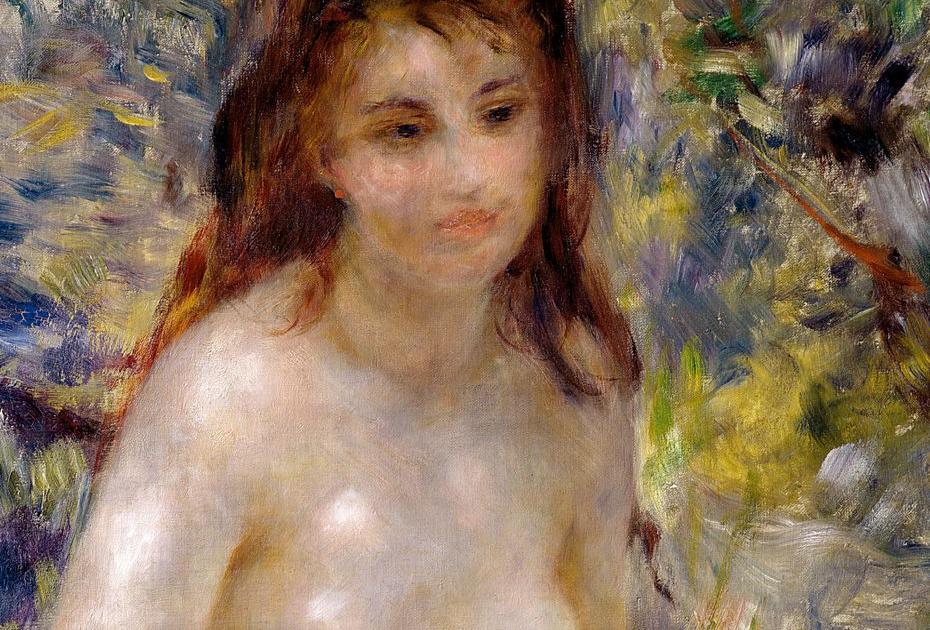In partnership with
RetroNews,
the BnF press site
If Impressionism is the subject of all the honors for its 150th anniversary, the beginnings of this innovative pictorial movement gave rise to a certain number of jokes, particularly in the press. And
Le Figaro
appeared particularly hostile and mocking. Rereading these words today is cruel but the daily newspaper, friend of the arts, has long since made amends.
A cat on a keyboard
The assault was not carried out immediately. During the first exhibition opened on April 15, 1874 in Nadar's former workshop, a thin section was devoted to those who were then called
"
the intransigents
"
:
"The works that we see there belong to the very advanced school of young painting: there are more or less successful attempts, but also attempts of auspicious originality”
, we can read. But during the sale of works by Claude Monet, Alfred Sisley, Auguste Renoir and Berthe Morisot to Drouot in 1875, the tone changed.
Édouard Manet wrote to the critic Albert Wolff of Le
Figaro
:
“You will be very kind to talk about it a little
. ”
It was bad for him. A short, unsigned article rings the bell:
“The impression given by the Impressionists is that of a cat wandering across the keyboard of a piano, or of a monkey grabbing hold of a color box. However, there may be a good deal here for those speculating on the art of the future
. The only moment when Albert Wolff has a hollow nose, he who the following summer will exhaust his compatriot Richard Wagner by predicting no future for him.
Sarcasm all around
During the second exhibition organized in April 1876 at the gallery owner Paul Durand-Ruel on rue Le Peletier in Paris, the critic from Le
Figaro
overwhelmed the impressionist painters with his sarcasm.
“Rue Le Peletier is in trouble,”
he begins.
After the fire at the Opera, a new disaster has struck the neighborhood. We have just opened an exhibition at Durand-Ruel, which is said to be of painting. The harmless passerby, attracted by the flags which decorate the facade, enters, and his horrified eyes are presented with a cruel spectacle. Five or six insane people including a woman, a group of unfortunate people suffering from the madness of ambition, met there to exhibit their work.
The rest is in keeping. No word is too harsh to pin down this
“cenacle of vain and noisy high mediocrity”
. Our journalist attacks some of the artists by name:
“Make Mr. Pisarro (sic) understand that the trees are not purple, that the sky is not a cool butter tone, that in no country we cannot see the things he paints and no intelligence can adopt such errors! You might as well waste your time trying to make a resident of Doctor Blanche, who believes he is the Pope, understand that he lives in Batignolles and not the Vatican. So try to make Mr. Degas listen to reason; tell him that there are certain qualities in art with names, drawing, color, execution, will, he will laugh in your face and call you a reactionary. So try to explain Mr. Renoir that a woman's torso is not a pile of decomposing flesh with purplish green spots which denote the state of complete putrefaction in a corpse! There is also a woman in the group, as in all famous bands, in fact; her name is Berthe Morisot and she is curious to observe. In her, feminine grace is maintained amidst the excesses of a delirious mind.”
U-turn on Degas and Morisot
During the fifth exhibition in 1880 on rue des Pyramides, the rage of the critic from Le
Figaro
did not die down. However, he saves Degas and Morisot.
“Why does a man like Mr. Degas linger in this agglomeration of worthless people?
he wonders.
Why doesn't he do like Manet who long ago deserted the Impressionists; he did not care about dragging the tail of this detestable school indefinitely behind him
.
But in 1890, a year before his death at the age of 56, Albert Wolff mellowed.
“To deny the amount of talent in the often exquisite works of the so-called Impressionist School would be stupidity,”
he then admitted
. To acclaim him en bloc, to subscribe to all his extravagances, would be foolishness. The critic can therefore be very severe one day and very tender the next for the same artists without in both cases ceasing to be right. There is no painter who has irritated me more than Manet; there are few who have often charmed me as much as he. And what I say about him applies to most impressionist painters.
In the following years, it was the art critic and collector Arsène Alexandre who took up his pen in
Le Figaro
to praise the talent of his impressionist friends. Thus, on April 21, 1899, he returned to the success of
“four masters”
, Sisley, Renoir, Monet and Pissarro, brought together in an exhibition at Durand Ruel with Corot, the father of them all:
“Now, they attract the admiration of order, as in the past they were made fun of for being up to date. But it is a proof of the value of their work if the number of their true admirers has remained approximately the same; I mean those who really understand them and love them for themselves, and not for the vanity of appearing on the train, as they say.”
And added:
“Let us not recriminate. Justice, as we have noticed even in ancient times, always comes with slow steps, pede claudo, which even means that it is crippled a little if necessary. It is already very beautiful that artists witness during their lifetime the success that they only seemed to achieve after their death.

